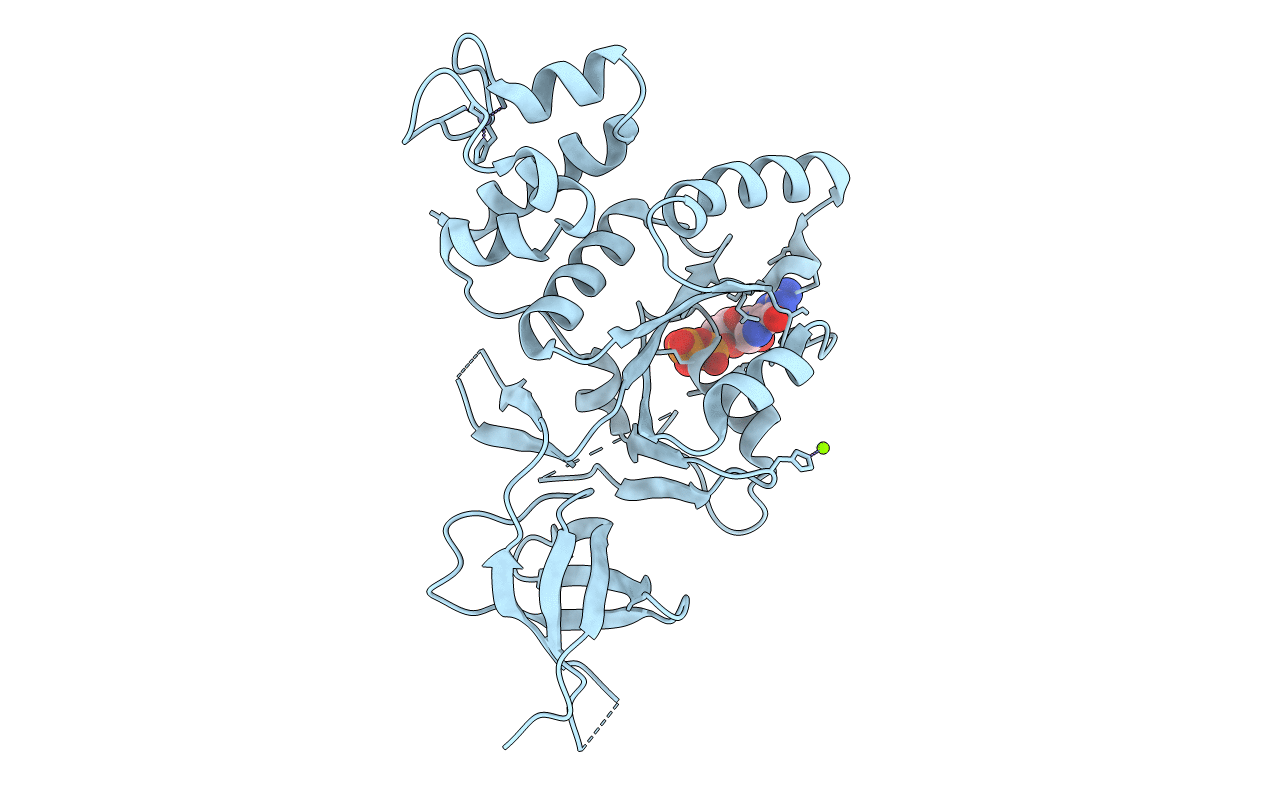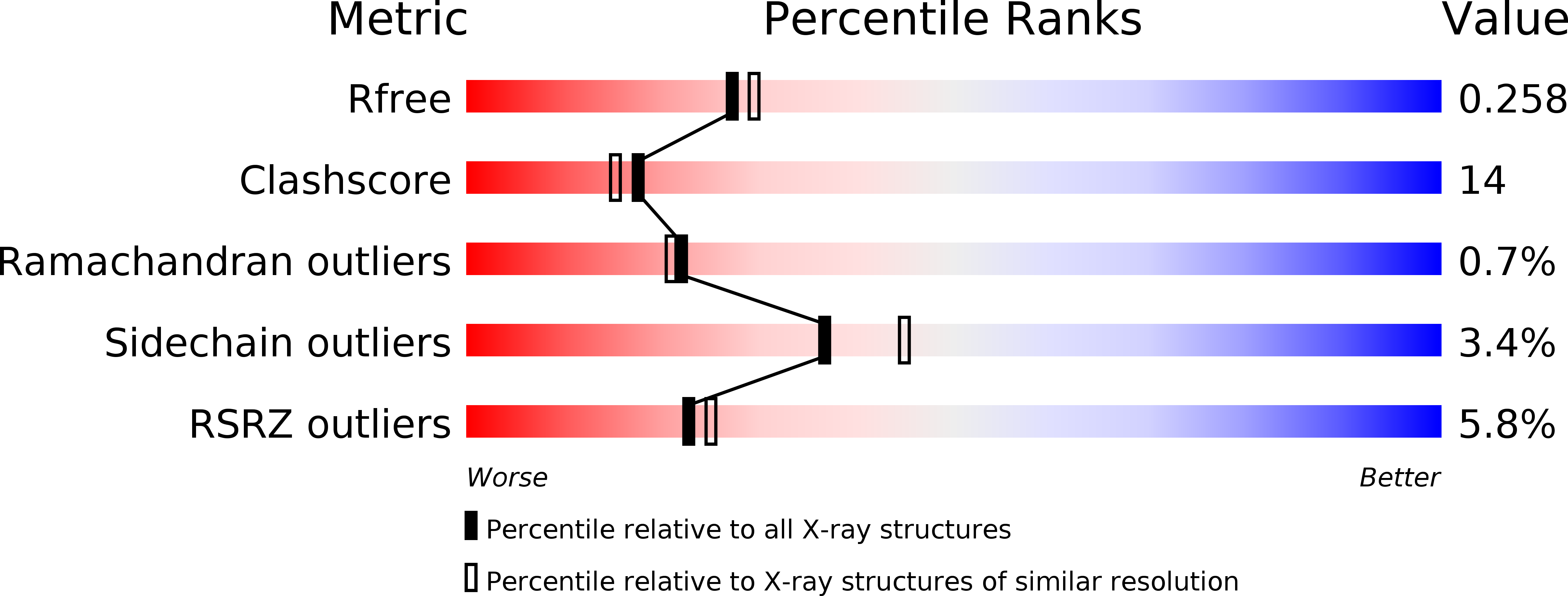
Deposition Date
2007-09-20
Release Date
2008-01-29
Last Version Date
2023-08-30
Entry Detail
PDB ID:
2RCN
Keywords:
Title:
Crystal Structure of the Ribosomal interacting GTPase YjeQ from the Enterobacterial species Salmonella Typhimurium.
Biological Source:
Source Organism:
Salmonella typhimurium (Taxon ID: 99287)
Host Organism:
Method Details:
Experimental Method:
Resolution:
2.25 Å
R-Value Free:
0.26
R-Value Work:
0.19
R-Value Observed:
0.19
Space Group:
P 31 2 1


